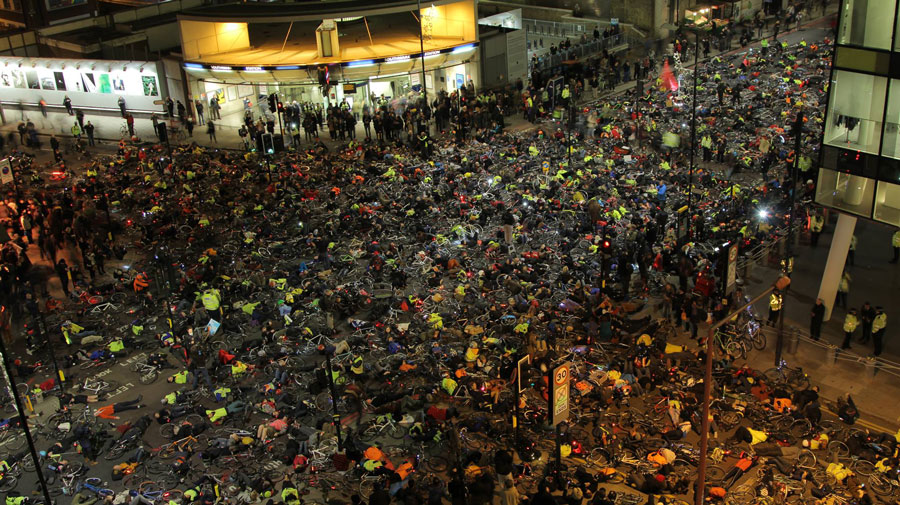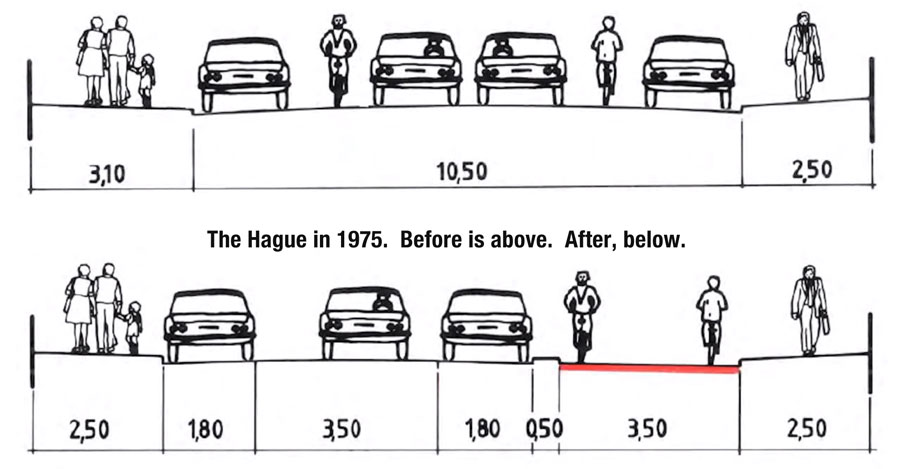
London’s Die-in at TfL. Click on the image for the high-res.
On the 29th of November 2013, almost 2,000 people staged the first ‘Die-in’. It was a peaceful event following the deaths of six cyclists in just nine days. The idea was to replicate a protest which happened in Holland in the 70’s: attendees simply lay down on the road alongside their bikes for fifteen minutes. ‘Stop de Kindermoord’ prompted a national debate which resulted in the Dutch Government investing in safe cycle infrastructure nationwide.
Currently London’s cyclists get £1.25/year per person in cycle-specific infrastructure. The Dutch continue to spend £33 each year, per person, nationwide. Whilst their routes have been constructed over many years, the Dutch public demand that it remains of the highest quality.
How the Dutch got their cycle paths.
Could we have car-free Sundays in London?

The Hague in 1975, before and after the new cycle infrastructure was built.
In the image above, a relatively simple template emerged. It’s approach prioritises safety for the most vulnerable road users (which includes pedestrians walking). Whilst one car lane is removed, this doesn’t impact throughput as the overall volume of traffic is always limited by single-lane pinch-points and intersections.
One key advantage of this lane limitation is the reduction of stress-inducing switches from two lanes to one in cars and lorries. Another is that street widths remain constant, so lorries and buses are less likely to injure or kill cyclists and pedestrians at intersections. As lorries account for over 50% of all deaths and serious injuries in London, this can only be a good thing. Safer infrastructure reduced deaths in Holland from 400 in 1971 to 14 in 2010 (10 cyclists were killed in London alone, in 2010. A further 3,997 were injured).
Whilst the event was hosted by cyclists, the attendees included pedestrians too. It’s important to note that more pedestrians are killed and seriously injured by vehicular traffic than cyclists. Since we all walk, we’re all pedestrians as well as cyclists.
